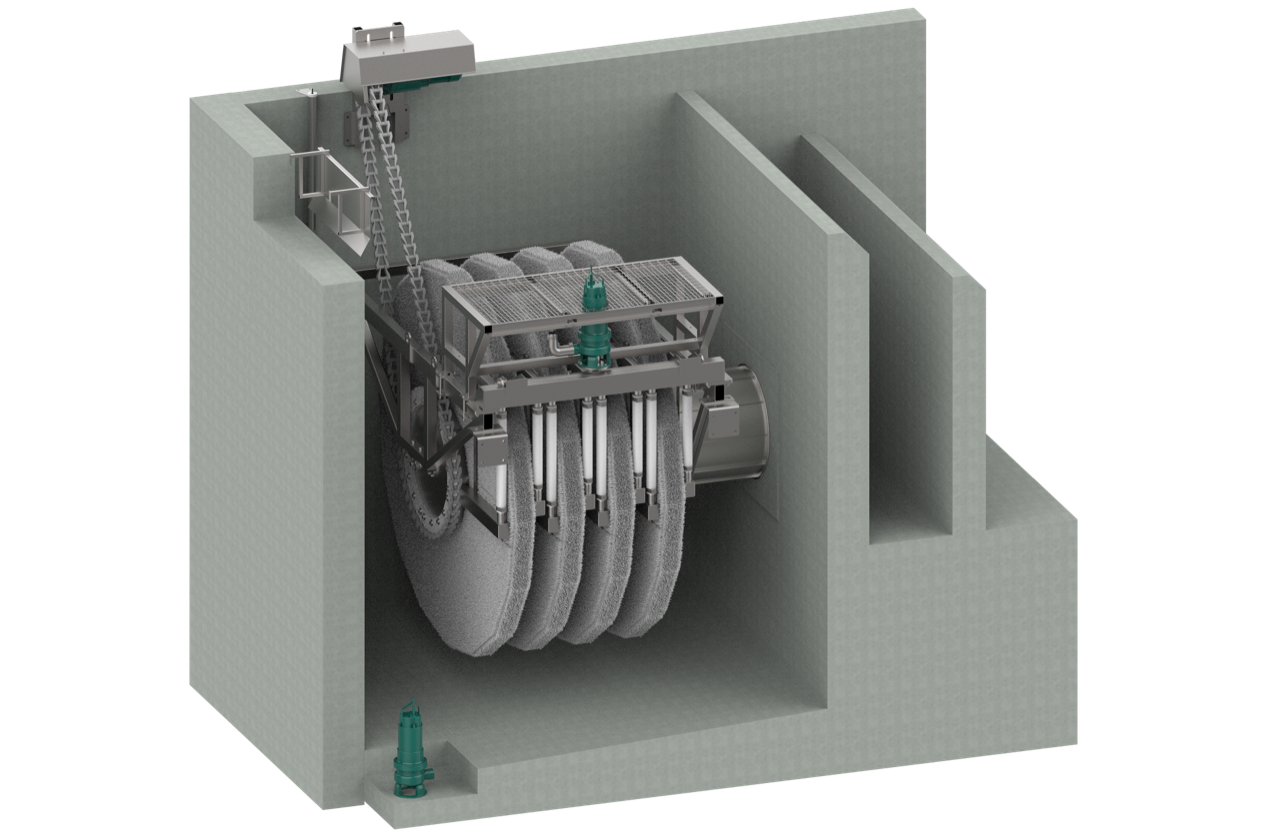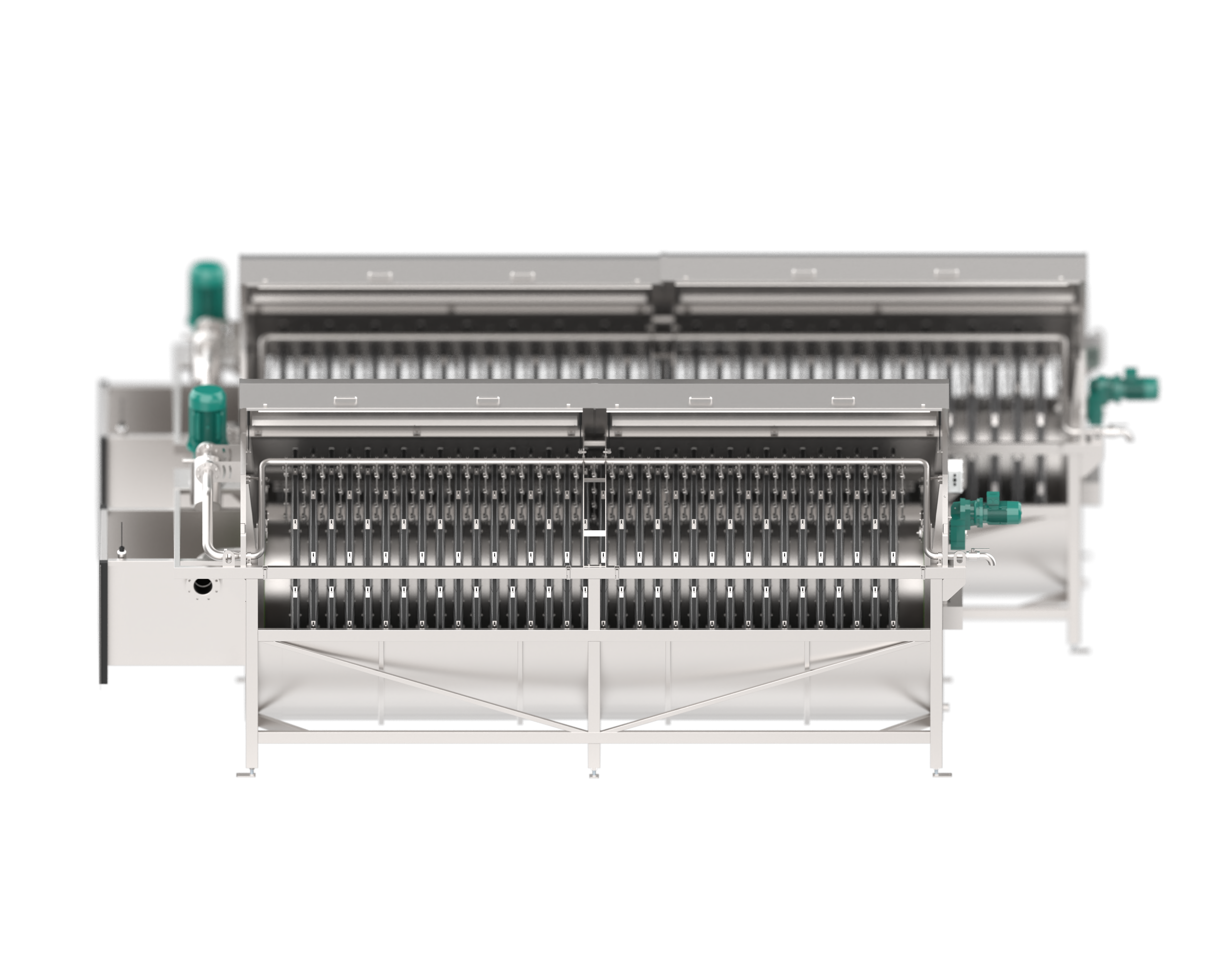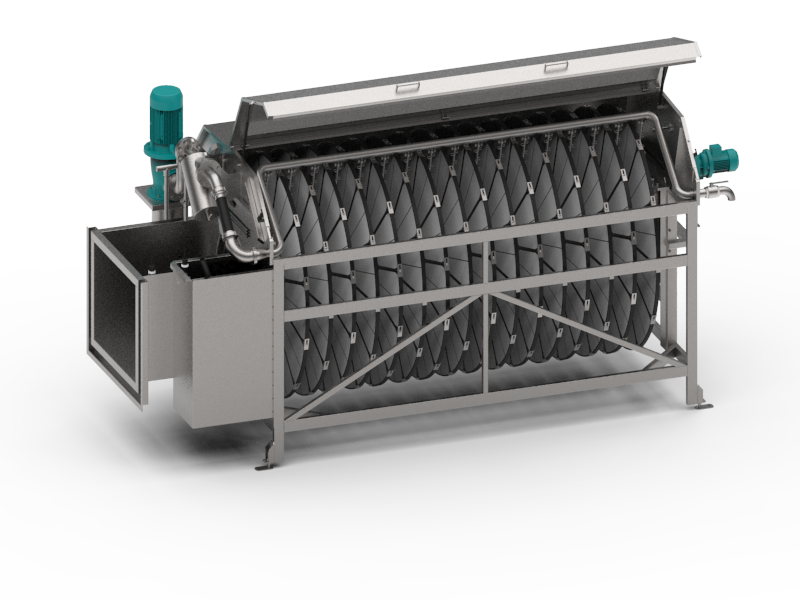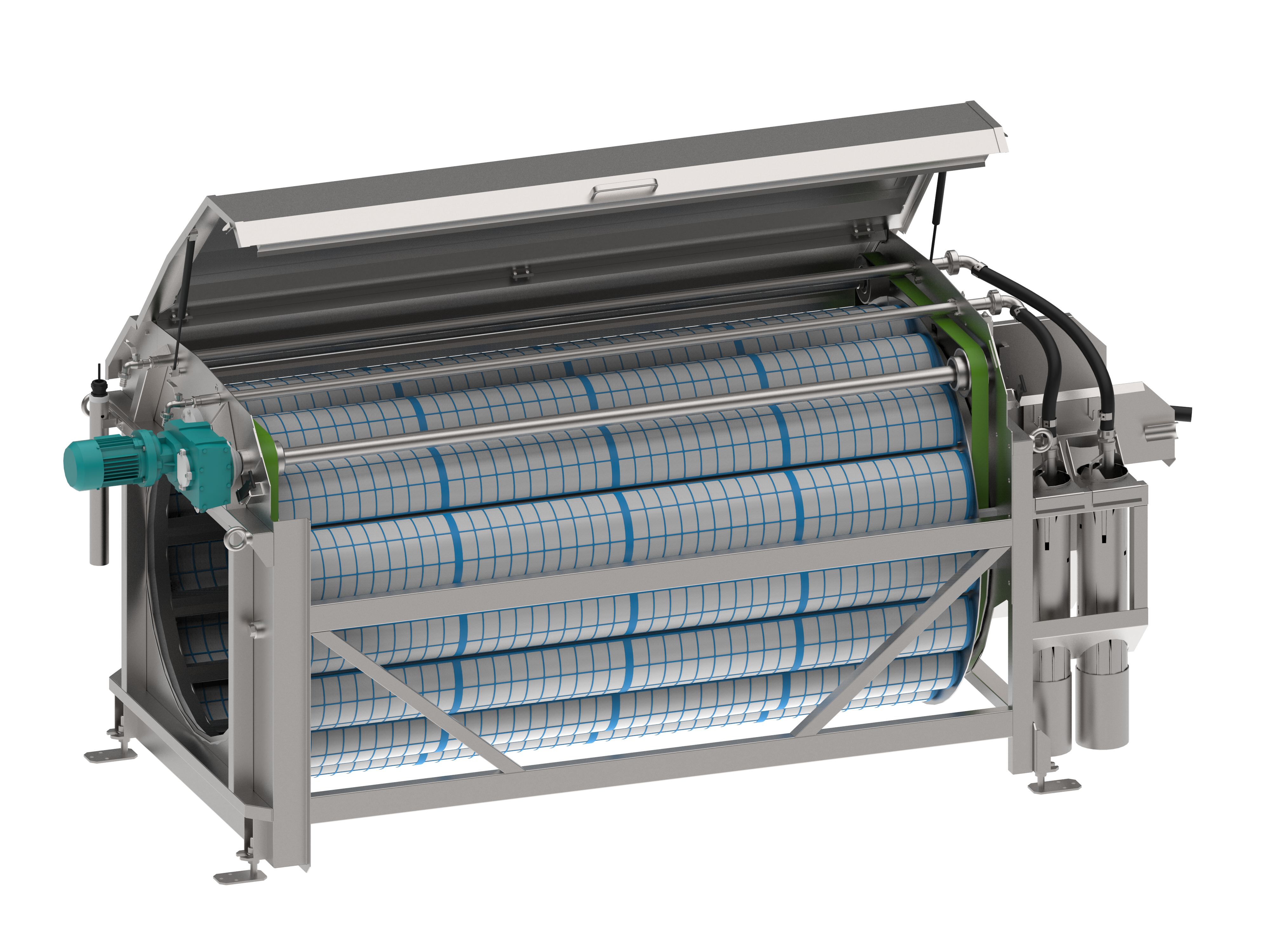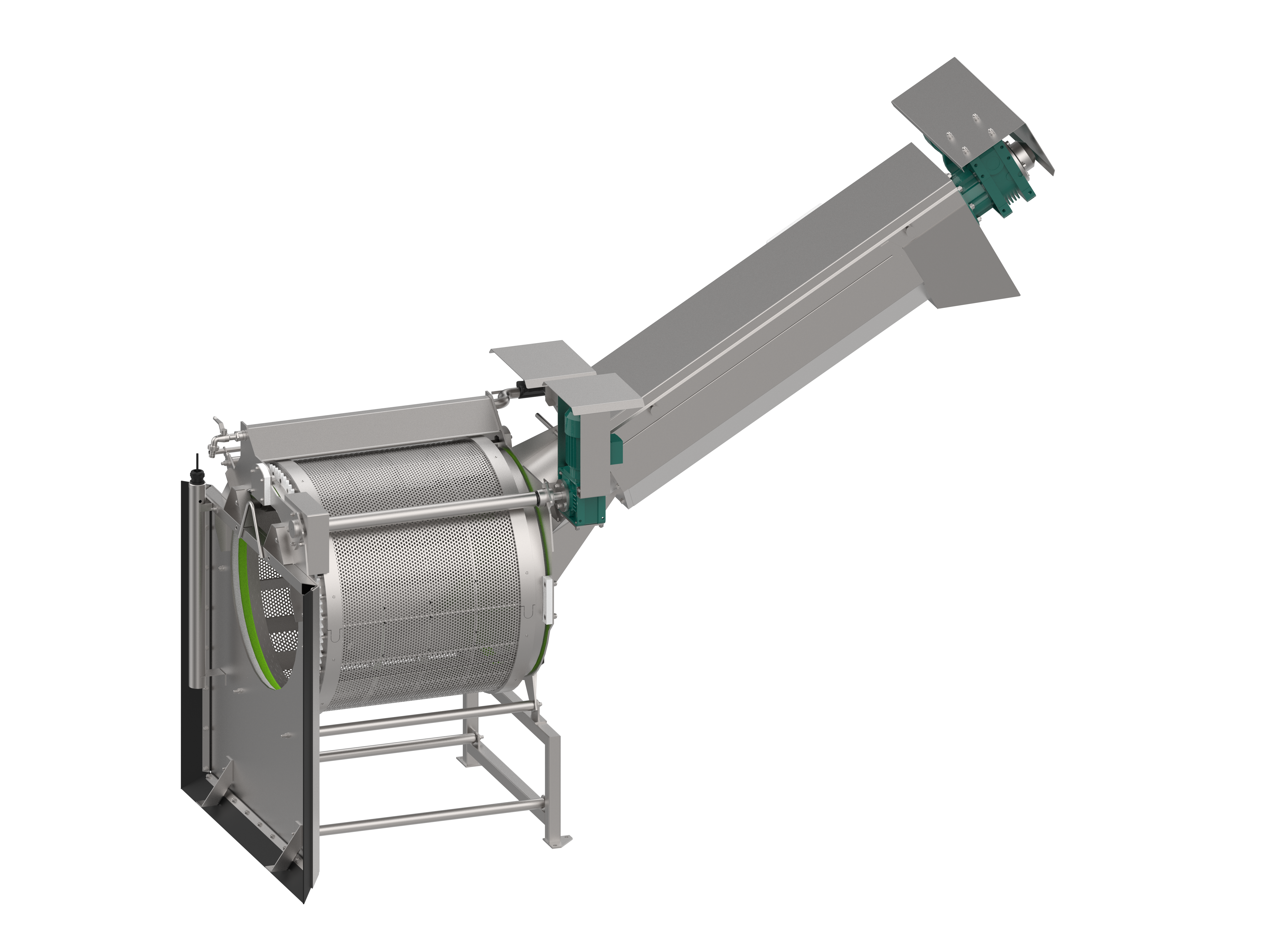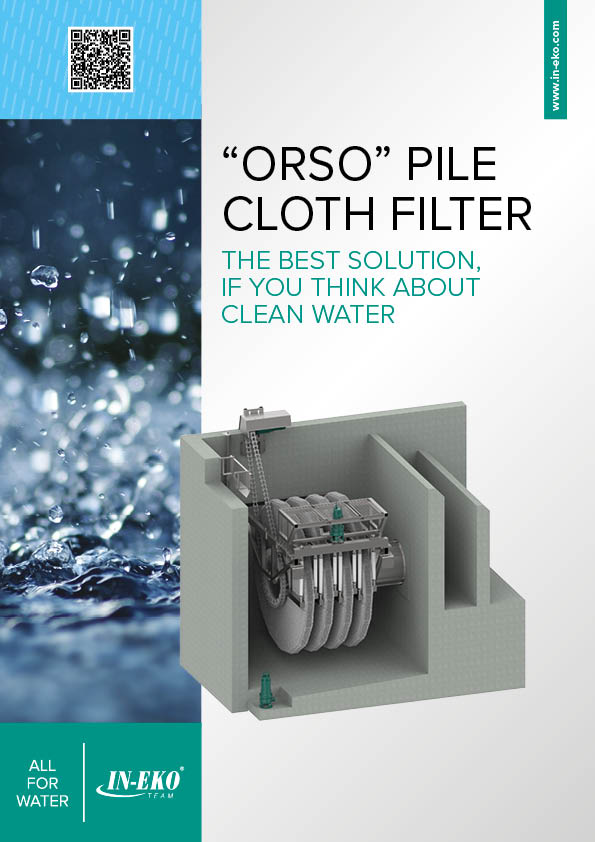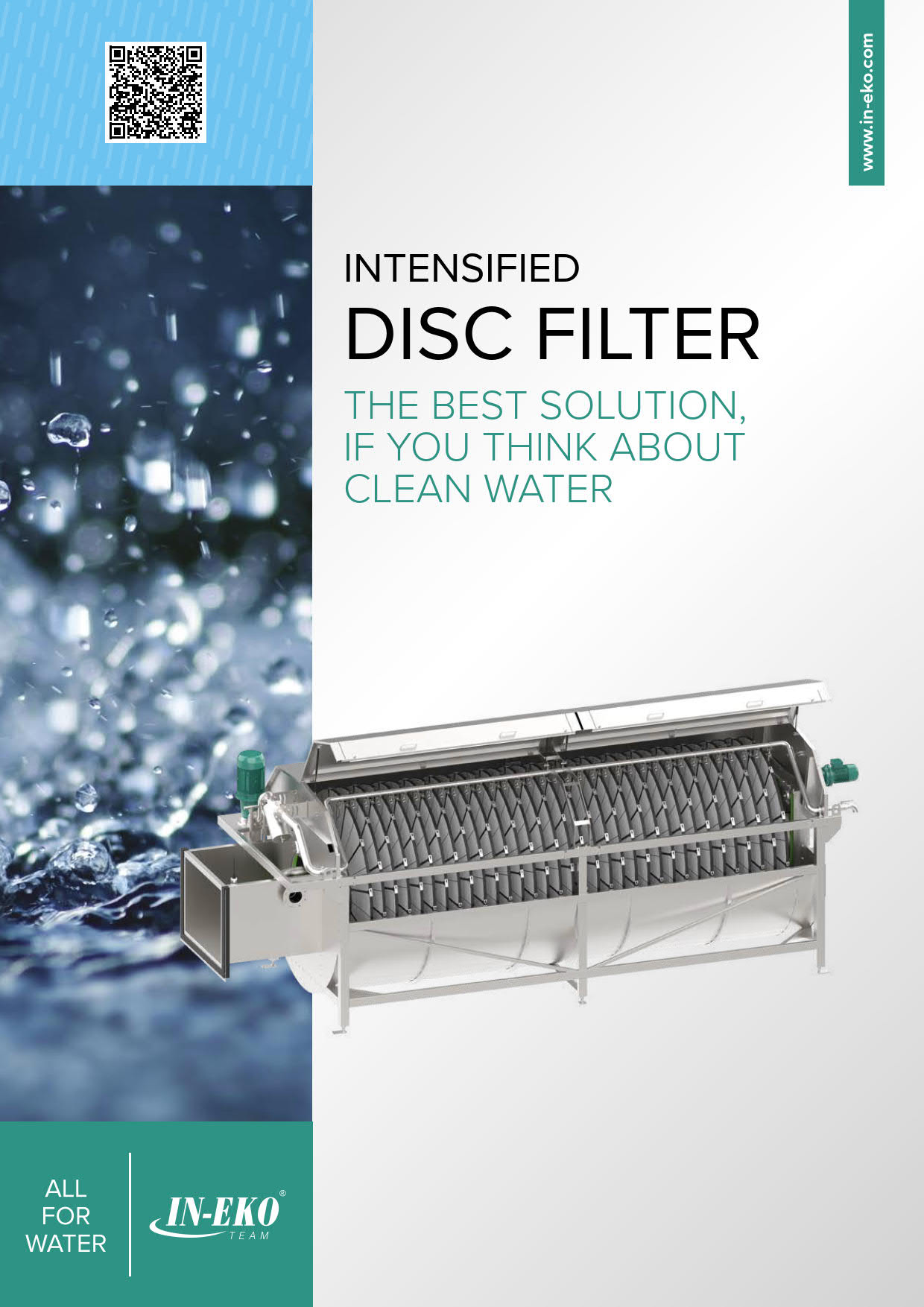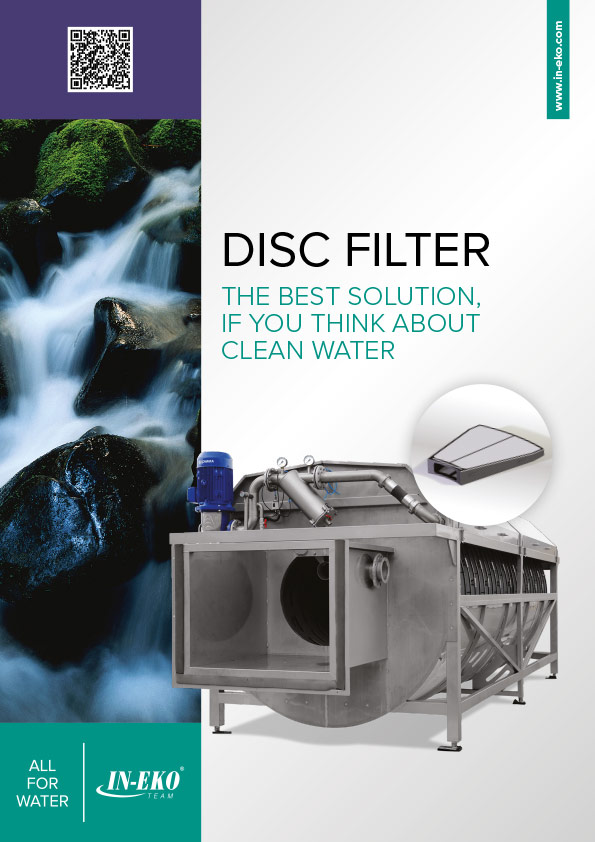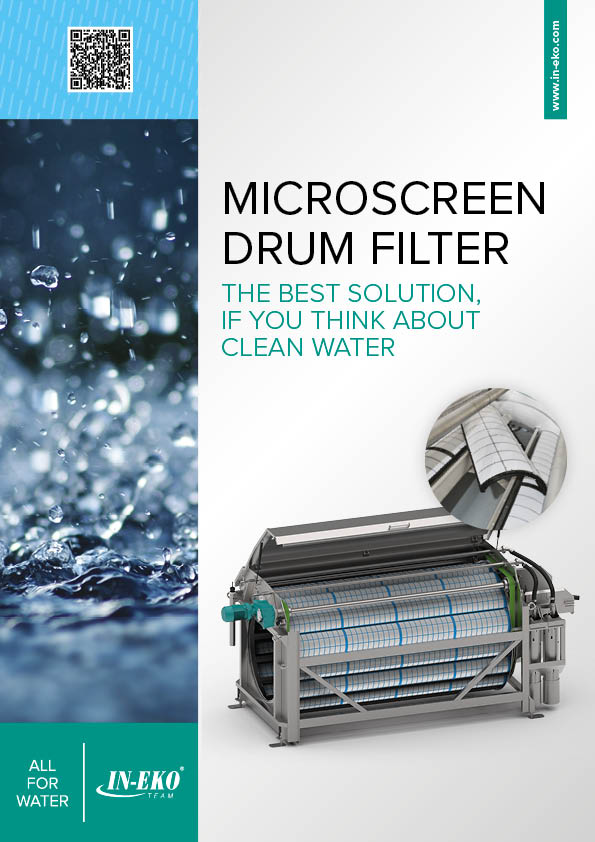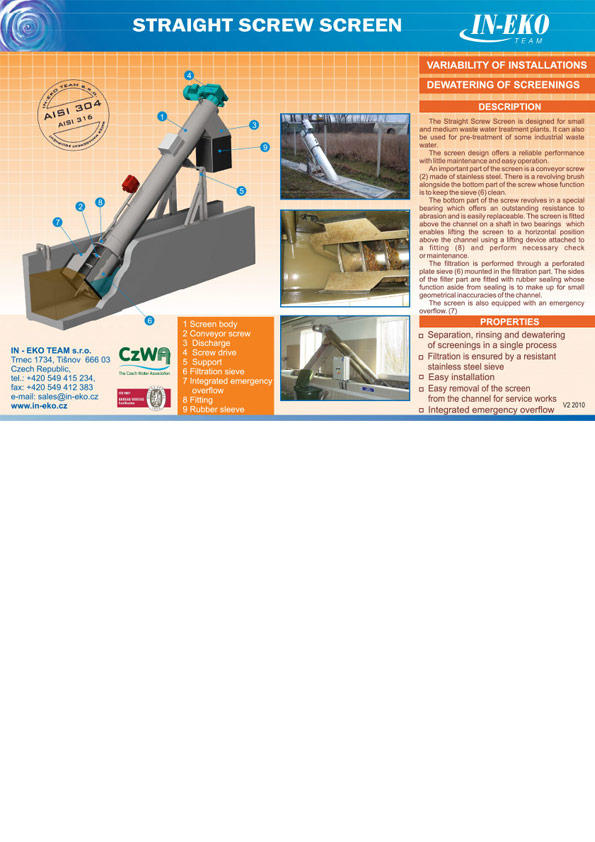Water containing solid particles flows through a supply pipe or channel into the interior of the filter drum, impurities are trapped on the inside of the filter cloth and the purified water flows out through the cloth. During this filtration process, the entire filtration device is at rest (it does not consume any energy). The filter cloth becomes clogged with gradually flowing dirt, the resistance of the tarpaulin to flow increases and the water level and hydrostatic pressure inside the drum increase.
When the set level in the inner part of the filter drum is reached, the level probe automatically switches on the drum rotation drive and at the same time the rinsing pump, which pumps the filtered water to the nozzles of the rinsing system. The precisely directed stream of water, sprayed by special nozzles, entrains the dirt trapped on the inside of the fabric into the waste chute, which is located inside the drum. The sludge flows into the sludge sump and is pumped out by a sludge pump, which is also automatically controlled by a level probe located on the wall of the sludge sump. With the possibility of gravity sludge outflow, the sludge pump is omitted. At the end of the flushing process, the level in the filter drum drops and its drive and flushing pump are switched off. The device is at rest. The process is repeated.
No additional holding tanks for backwash water or sludge water are required for the plant, because the raw water supply is not interrupted during the rinsing process and the rinsing water is taken directly from the filter plant, which leads to a significant reduction in investment costs. The sludge sump is an integrated part of the device.
By automatically switching the filter on and off, power consumption is minimized. energy, the average quality of the filtered water increases, the density of the effluent increases and the service life of the entire plant is extended.
If the micro-sieve filter is inactive due to a power failure, the filter cloth will completely clog over time and the water will rise to the emergency level. In this case, the water is drained, leaving the remaining filtered water clean. After eliminating the cause of the device’s inactivity, it is possible to start filtering again without any intervention in the machine. The flushing pump has enough clean water to perform a high-quality flushing of the filter cloth. The device returns to the original cycle.


